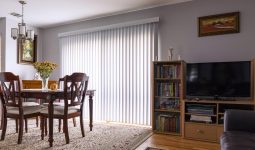If you’re confused and unsure of the differences between Curtains, Drapes, Shades, and Blinds window treatments from each other, then read our lowdown on them.
There are so many options when it comes to window decoration that choosing the right one for your home can be overwhelming.
To make matters even more confusing, many people, including interior designers, confuse the differences between Curtains, Drapes, Shades, and Blinds and use the terms “curtains” and “drapes” alternately, mixing up “shades” and “blinds” as if they were also synonymous.
However, although these four types of curtains can be used in many decoration styles and all house rooms, each has its characteristics.
Of the four, the most common in many homes are curtains and drapes. While curtains are found in spaces such as hallways, doorways, partitions, bay windows, balconies, and family living rooms, drapes are mainly used in large halls, home theatres, bedrooms, formal dining, and living rooms.
So read on to find out how to determine the differences between Curtains, Drapes, Shades, and Blind window treatments, which will help you make the right choice for your needs.
Curtains
Curtains are fabric panels supplied in pairs. They come in various widths, lengths, fabrics, colors, and patterns, making them a versatile and popular choice for any room in the house, including bathrooms and kitchens.
Short, sheer curtains that cover only the lower half of the window above the kitchen sink, often paired with a valance across the top of the window, are called café curtains.
Because curtains are constructed of lightweight, sometimes sheer fabrics with no lining, you’ll probably use them in the bedroom instead of another window treatment like a blind or shade.
This means that while the curtains filter out some of the light, they won’t filter out all of it. So your bedroom won’t be dark when you want to go to bed late.
Curtains are suspended from a rod that can be hidden, simple, decorative, and exposed, depending on how the curtains are hung.
There are many hanging options. The most common options are metal grommets, metal or fabric rings, and fabric covers on top or back of drapery panels.
Use colorful curtains to contrast your bedroom, or choose an interesting fabric pattern to brighten up a space. Sheer curtains, on the other hand, add softness and femininity to the room.
Depending on the length and style, curtains often have different names.
- A cafe or tier curtain is a window treatment designed to hang from the middle of the window to the bottom of the window sill. These curtains are often unlined sheer or lightweight fabric. This style is popular on kitchen windows and doors with windows.
- A valance curtain is a piece of fabric hung over a window. Valances are usually pleated or flat and hang on a curtain rod. They are often used to add style and color and cover window treatment hardware. They usually combine with additional window treatments, such as longer curtain panels, drapes, shades, or blinds.
- Curtain panels are long fabric pieces hanging from the curtain rod. They can be sheer, opaque, or a mixture of both. There are many different and decorative ways to hang curtain panels, such as rod-on rings, grommets, or fabric covers.
Drapes
Amongst the differences between Curtains, Drapes, Shades, and Blind window treatments, are you looking for a rich, classic window design for your home that makes a striking visual impact? In this case, elegant puddle drapes can be the perfect solution.
Like curtains, drapes are fabric panels and are usually sold in pairs. However, the difference between curtains and drapes is that drapes are lined, sometimes with a fabric thick enough to block out all outside light, making them perfect for use in the bedroom.
Drapes (sometimes called Draperies) are long enough to reach from the top of the window to the floor, sometimes even a little below the window. Heavy, slightly stiff fabrics, including luxury materials such as velvet, damask, or silk, are the norm for drapes.
Although drapes come in various styles and colors, they are often more solid than the others with a strong pattern.
The top of the drapery is often pleated, and these wrinkles, along with the heavy fabric, contribute to the formal look of this popular window decoration.
Like curtains, draperies hang from rods on rings, hooks, grommets, or fabric sleeves at the top or back of the panel.
The most popular in the bedroom are blackout styles, which keep the room dark enough for a good night’s sleep. They are an excellent option for anyone who needs to sleep during the day, such as night-shift workers.
Draperies are indeed an investment that requires adequate care to maintain their quality. Once installed, it’s easy to forget that they may readily accumulate dust and debris and ultimately need cleaning.
Cleaning your drapes properly might take some time and effort. You can wash drapes or curtains by hand, machine, or brush and vacuum them to remove most dust and dirt, as with velvet drapes.
If you take your time, you will have clean, fresh drapes that seem brand new. If you don’t want to clean the curtains yourself, you may hire a professional drapery cleaning service to do it for you.
Before washing, remove any pins, hangers, and other hardware from your drapes; otherwise, the fabric and washer may be damaged.
Shades
The shade is a soft fabric panel attached to a rod or frame at the top edge. Sold individually, shades come in a wide range of lengths, widths, colors, and materials and are sized to fit a window frame, unlike curtains or drapes that hang below the sill.
You lift the shades with a cord, roller, or lifting mechanism to let in light or see out. As the shades go up, they either shrink or roll around the rod, depending on the style, and there are many shades styles for windows.
Single roller shades are inexpensive. As the name suggests, the material wraps around the top roller. Popular types of shades include Roman shades, balloon shades, tie-up shades, etc.
In addition to many styles, you can find shades that complement any decorating theme, from casual to formal.
The variety of Shades styles include;
- Roller shades have fabric rolled up on top of the shades that roll down when you want to block light or add privacy.
- Roman shades are raised in deep pleats, folded fabric that rolls up and down.
- Cellular shades have a honeycomb design and are often used as blackout shades in bedrooms.
- Pleated shades are formed of a single fabric piece and are taught to have horizontal folds.
- Balloon shades have poufs of fabric at the bottom that look like balloons. The poufs can be released to cover more of the windows.
- Tie-up shades, which are tied with a fabric tie to hold them open
- Bamboo and wood shades add an organic element to your room as they are made of natural woven materials.
Although window shades can be stylish enough to wear independently, many like to use them under sheer curtains or with valances.
As with curtains, shades can add a pop of color, a dash of pattern, or a dose of texture to a space.
When it comes to cleaning, most of them may be dry cleaned, delicately machine washed, or even vacuumed. You may clean the roller with a vacuum or with gentle soap.
Blinds
Amongst the differences between Curtains, Drapes, Shades, and Blinds, Blinds are radically different, and you’ve probably seen them often in offices and study rooms.
While blinds are raised and lowered with a cord or a lifting mechanism like shades, they differ in that they are not made of strong fabric.
Instead, blinds are made of wood, bamboo, aluminum, or vinyl slats, also called louvers, that open to let in light or close for privacy. Therefore, it is seldom necessary to raise the entire blind unless the window below is opened.
Standard blind depths are 1/2 inch or 1 inch, called mini blinds, or 2 inches, often called Venetian blinds. The length and width of the blinds are such that they fit inside the window frame.
Blinds are available in many colors and shades of wood but are generally not patterned. Because they block light very effectively, blinds are a good option for the bedroom.
Covering them with sheer curtains or valances softens their rigid appearance, which can be somewhat bland.
While horizontal blinds are the most common type, hanging vertical slat blinds are also available. These blinds are usually used on sliding patio doors or large sliding windows.
Regarding maintenance, the blinds may be cleaned with a soft cloth and a pinch of furniture polish. Dusters can also be used.
However, professional cleaning may be required if there is a significant stain or filth.
While form and function are significant factors when deciding which window treatment is best, it should not be overlooked how the differences between Curtains, Drapes, Shades, and Blinds may also alter the style and feel of a room—and your house as a whole. I hope we can now decide which type of window treatment is best for your space.








